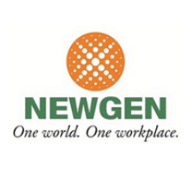

Microsoft Power Apps and NewgenONE Digital Transformation Platform compete in the digital transformation sector. NewgenONE appears to have the upper hand due to its comprehensive feature set and capability to handle complex enterprise needs.
Features: Microsoft Power Apps is designed for ease of creating custom applications without extensive coding and integrates with Microsoft 365. It is user-friendly and supports rapid app development. NewgenONE offers robust enterprise capabilities with seamless process automation and advanced workflow management, providing a wide array of features suited for intricate enterprise processes.
Ease of Deployment and Customer Service: Microsoft Power Apps facilitates a smooth deployment process, especially within Microsoft environments, aided by extensive support. In contrast, NewgenONE requires a more customized deployment approach due to its focus on flexibility and integration, with customer service praised for thorough support during complex implementations.
Pricing and ROI: Microsoft Power Apps offers a cost-effective pricing model appealing to businesses looking for scalable solutions, ensuring predictable ROI with lower initial costs. NewgenONE, while demanding greater initial investment, provides significant ROI benefits through its advanced features, suited for companies that prioritize comprehensive capabilities over cost.
| Product | Market Share (%) |
|---|---|
| Microsoft Power Apps | 9.0% |
| NewgenONE Digital Transformation Platform | 0.9% |
| Other | 90.1% |
| Company Size | Count |
|---|---|
| Small Business | 31 |
| Midsize Enterprise | 17 |
| Large Enterprise | 50 |
Microsoft Power Apps is a rapid application development software and low-code development platform. The solution consists of a suite of apps, services, connectors, and a data platform. It provides an environment for building custom apps which is suitable for different businesses.
Microsoft Power Apps allows users to not only build applications, but also connect them to Microsoft's other sources, including the underlying data platform Microsoft Dataverse, as well as online and on-premise sources such as SharePoint, Dynamics 365, and Microsoft 365. The applications built using Microsoft Power Apps have a responsive design that makes them suitable for work in browsers and on mobile applications on different devices.
The no-code side of the product makes it suitable for complete beginners to app building, allowing them to easily create fully functional applications with many features. The solution also has a specialized platform for developers where specialists can access data and metadata, create custom connectors, integrate with external data, and apply business logic. The solution allows users to create three types of apps: canvas, model-driven, and portal. They are made using:
Microsoft Power Apps Features
The three different design tools of the solution, Power Apps Studio, App Designer, and Power Apps Portals Studio, come with various features which allow users to utilize the tools. Some of these features include:
Microsoft Power Apps Benefits
The product brings various benefits to organizations and individuals who utilize it. Some of the biggest advantages of Microsoft Power Apps include:
Reviews from Real Users
An IT Specialist (INFOSEC) at a government appreciates this tool because it is low-code, low learning curve, and reduces manpower.
Rafael T., a data engineer at NTT Security, likes Microsoft Power Apps, because it is great for making apps quickly, has helpful support, and integrates with Power BI.
Unlock Simple with NewgenONE
A unified, cloud-based platform, with a robust integration ecosystem, for automating end-to-end business processes and comprehensively managing content and communications
We monitor all Low-Code Development Platforms reviews to prevent fraudulent reviews and keep review quality high. We do not post reviews by company employees or direct competitors. We validate each review for authenticity via cross-reference with LinkedIn, and personal follow-up with the reviewer when necessary.